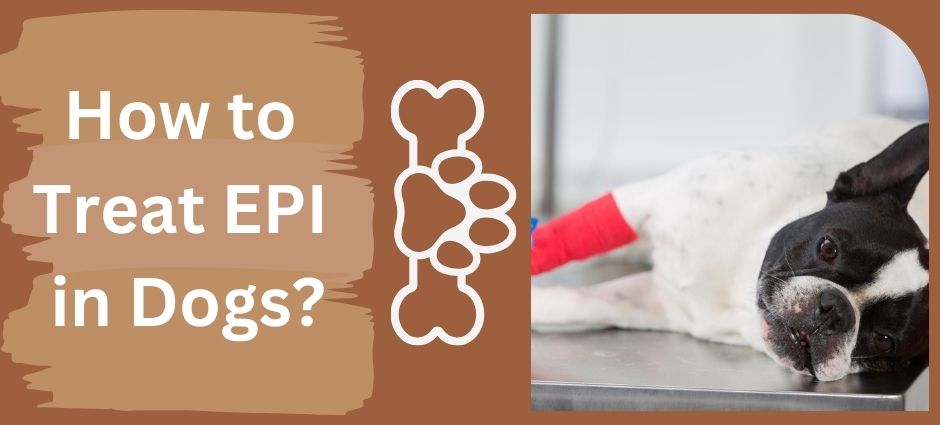Exocrine Pancreatic Insufficiency (EPI) is a serious condition that affects a dog’s ability to digest food properly. It occurs when the pancreas fails to produce enough digestive enzymes, leading to malnutrition, weight loss, and other health issues.
Understanding how to treat EPI in dogs is crucial for dog lovers who want to ensure their furry friends lead happy and healthy lives. This guide will walk you through the symptoms, diagnosis, and treatment options for EPI in dogs.
Recognizing the Symptoms of EPI in Dogs
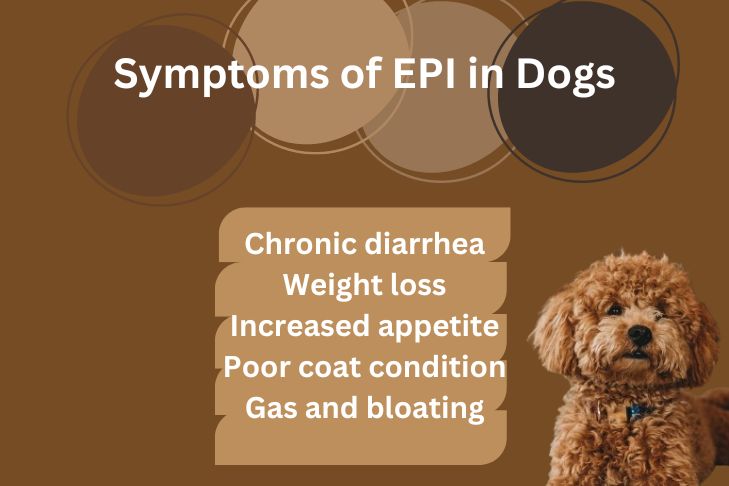
Before diving into how to treat EPI in dogs, it’s important to recognize the symptoms. EPI can be challenging to diagnose because its symptoms are often similar to those of other gastrointestinal issues. Some common signs include:
- Chronic diarrhea: Dogs with EPI often have loose, watery stools.
- Weight loss: Despite having a normal or increased appetite, dogs with EPI lose weight due to malabsorption of nutrients.
- Increased appetite: Your dog may become unusually hungry or start eating non-food items.
- Poor coat condition: The lack of nutrients can lead to a dull, dry coat and excessive shedding.
- Gas and bloating: Digestive issues can cause discomfort and visible bloating in the abdomen.
If you notice any of these symptoms, you need to rush to your dog’s vet as soon as possible to avoid any harm coming to him.
Note: We, at Claw Hive, provide all the information on ear dermatitis in dogs.
Diagnosing Epi Before Learning How to Treat Epi in Dogs
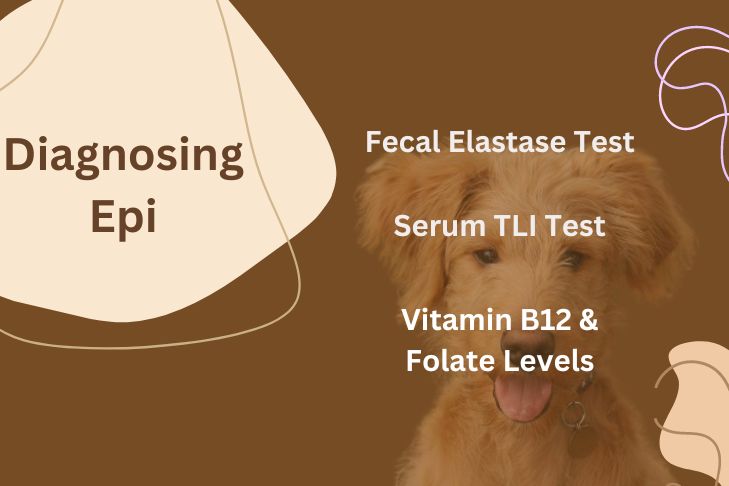
To effectively learn how to treat EPI in dogs, a definitive diagnosis is necessary. Veterinarians typically use several tests to confirm EPI:
- Fecal Elastase Test: This test measures the level of elastase, an enzyme produced by the pancreas, in your dog’s stool. Low levels indicate EPI.
- Serum Trypsin-like Immunoreactivity (TLI) Test: The TLI test measures the amount of trypsinogen and trypsin (pancreatic enzymes) in the blood. Low levels are indicative of EPI.
- Vitamin B12 and Folate Levels: Dogs with EPI often have low levels of vitamin B12 and high levels of folate due to bacterial overgrowth in the intestines.
These tests help your veterinarian determine the best course of action for treating EPI in your dog.
How to Treat EPI in Dogs: Enzyme Replacement Therapy
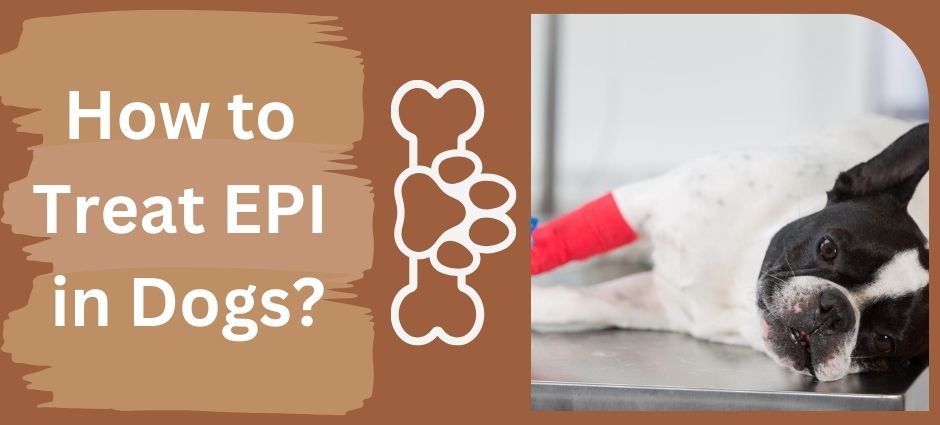
The cornerstone of how to treat EPI in dogs is enzyme replacement therapy. Since the pancreas cannot produce enough enzymes, these must be supplemented with each meal. Here’s how it works:
- Pancreatic Enzyme Supplements: These supplements come in powder, tablet, or capsule form. The powdered form is often preferred because it can be easily mixed with food. The enzymes break down fats, proteins, and carbohydrates, making them easier for your chunky dog to absorb.
- Dosage and Administration: Your veterinarian will provide specific instructions on the dosage based on your dog’s weight and severity of EPI. Typically, the enzyme powder is mixed with food and allowed to sit for 15-20 minutes before feeding.
Must Read: How Dosage of Aspirin Impacts Dogs?
Dietary Management for Dogs with EPI
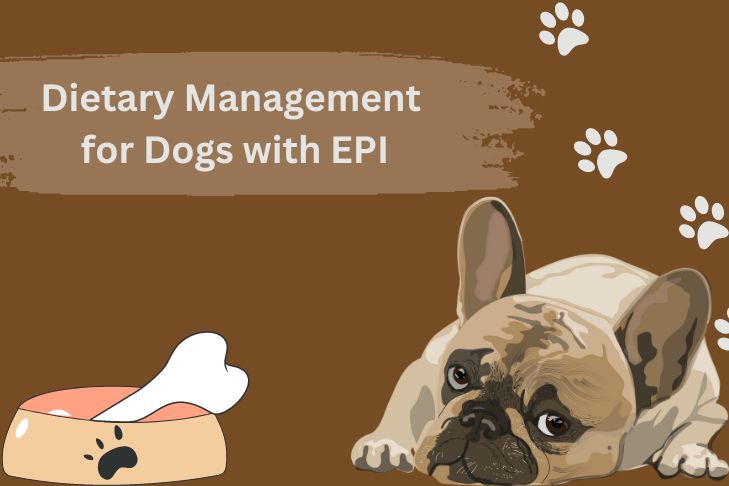
Alongside enzyme replacement therapy, a proper diet plays a crucial role in how to treat EPI in dogs. Here are some dietary guidelines to follow:
- High-Quality, Low-Fat Diet: Opt for a highly digestible, low-fat diet to reduce the workload on your giant fluffy dog’s pancreas. Prescription diets formulated for gastrointestinal issues can be beneficial.
- Frequent, Small Meals: Feeding smaller, more frequent meals can help improve nutrient absorption and reduce digestive stress.
- Avoid High-Fiber Foods: High-fiber diets can interfere with enzyme activity and nutrient absorption. Stick to low-fiber options.
- Monitor Weight and Adjust Food Intake: Regularly monitor your dog’s weight and adjust their food intake accordingly to ensure they are getting the right amount of nutrients.
Supplementation and Supportive Care

In addition to enzyme replacement and dietary management, certain supplements can aid in how to treat EPI in dogs:
- Vitamin B12 Supplements: Dogs with EPI often have low vitamin B12 levels, which can affect energy levels and overall health. Your veterinarian may recommend B12 injections or oral supplements.
- Probiotics: Probiotics can help balance the gut flora, improve digestion, and reduce gastrointestinal symptoms.
- Antibiotics: In some cases, secondary infections or bacterial overgrowth may require a course of antibiotics for your big white dog.
Monitoring and Adjusting Treatment
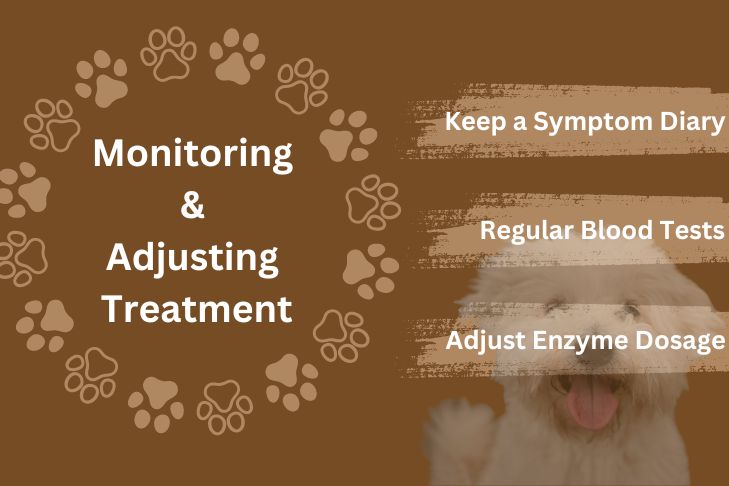
Managing EPI is an ongoing process. Regular veterinary check-ups are essential to monitor your dog’s progress and adjust treatment as needed. Here are some tips for effective monitoring:
- Keep a Symptom Diary: Track your dog’s symptoms, appetite, and stool quality to identify any changes.
- Regular Blood Tests: Periodic blood tests can help monitor enzyme levels, vitamin B12, and folate levels.
- Adjust Enzyme Dosage: If your dog’s symptoms persist or worsen, consult your veterinarian to adjust the enzyme dosage.
Conclusion
Understanding how to treat EPI in dogs is vital for providing the best care for your pet. With proper enzyme replacement therapy, dietary management, and supportive care, dogs with EPI can lead happy, healthy lives.
Regular monitoring and communication with your veterinarian will ensure your dog receives the optimal treatment for their condition. By staying informed and proactive, you can help your furry little pups thrive despite the challenges of EPI.



